The philosophy of The Laminitis Site is “identify and remove/treat the cause, and support and realign the feet”. Thanks to recent research we are now much better at establishing and treating the cause to prevent further laminitis, but what about feet damaged by laminitis – can rotation and/or sinking (also called distal descent) be corrected?
Yes, absolutely. In many cases the hoof capsule can be realigned with the pedal bone, sinking distance may reduce, and the horse can return to its pre-laminitis level of soundness.
In 2014 Dr Debra Taylor at Auburn University published a paper:
Taylor D, Sperandeo A, Schumacher J, Passler T, Wooldridge A, Bell R, Cooner A, Guidry L, Matz-Creel H, Ramey I, Ramey P
Clinical Outcome of 14 Obese, Laminitic Horses Managed with the Same Rehabilitation Protocol
Journal of Equine Veterinary Science Volume 34, Issue 4, Pages 556–564, April 2014
describing how a realigning trim that minimized hoof wall loading, sole protection with boots and pads, and movement, returned 14 out of 14 horses with endocrinopathic laminitis and rotation as severe as 29 degrees to their pre-laminitis level of soundness.
Rehabilitation from laminitis starts with correctly marked lateromedial x-rays to assess the damage and to guide trimming. Any horse that has had clinical laminitis should have x-rays taken. Ponies in particular can have significant damage in their feet without appearing to be lame, and x-rays should be taken if external signs of chronic laminitis such as hoof rings wider at the heels than the toe, a stretched or deep white line or change of angle in the hoof wall are seen, so that rotation can be identified and corrected.
| A change of angle in the hoof wall at the toe (red), high heels making a shallow hairline to ground angle (blue) and divergent hoof rings (yellow) suggest chronic laminitis in this pony. X-rays confirmed dorsal and palmar rotation and remodelling of the pedal bone. | Casareño, 6 months into his rehabilitation, has a straight hoof wall at the toe (red), a good hairline angle (blue), and one hoof ring (yellow), presumed to be linked to the single corticosteroid treatment that appeared to trigger laminitis. X-rays confirmed that the hoof wall was parallel to the pedal bone, and that his rehabilitation following laminitis was progressing well. |
A vet suggested 8 months of specialist farrier work, shoes and box rest, but with a correct realigning trim and boots and pads she was soon able to have grass free turnout and in-hand exercise, and eight months after her realigning trim she was back in ridden work.
| A lot of information can be obtained from clear well-marked x-rays: | Marking the hairline and wall at the toe allows calculation of the amount of sinking (technically referred to as the coronary band:extensor process distance or CE) – yellow, the dorsal angle of rotation – red, and the difference in dorsal horn and lamellar tissue thickness at the top and bottom of the pedal bone (hoof:lamellar zone) – pink. A clear ground line enables the palmar angle – green, and sole depth – blue, to be calculated. Marking the apex of the frog provides an important reference for trimming, and helps to determine whether the apex of the frog is true or has grown forwards. An x-ray may also indicate areas of gas or fluid – orange (this horse was developing a sub-solar abscess), whether there has been remodelling of the pedal bone, and whether rotation is capsular and/or bony. Compare this to an unmarked x-ray of a foot with similar rotation. Whilst the bones are well defined, without a hairline marker it is impossible to assess sinking, and without a hoof wall marker the dorsal angle of rotation and hoof:lamellar zone would be estimates. Without a clear ground line the palmar angle and sole depth can only be guessed at, and there is no way of telling the position of the frog apex. All this x-ray really tells us is that the horse has rotation, a significant gas pocket and so far no bone remodelling. Both x-rays are digital and cost much the same, but the x-ray above with the external markers provides much more valuable information, particularly for the hoof care professional. |
If x-rays show rotation, a realigning trim should be carried out as soon as possible – while the foot is not correctly aligned, the horse is likely to be in pain, and the foot at risk of further damage. Dr Eleanor Kellon, in her online Cushing’s and Insulin Resistance course, states “ I firmly believe if more horses were trimmed correctly and aggressively from the start of their laminitis, we would see far fewer problems with chronic pain and eventual hoof deformity”.
In Care and Rehabilitation of the Equine Foot, Pete Ramey says “at the first signs of laminitis, restore P3 to a more natural ground plane, relieve pressure on the walls and pad the sole with foam rubber – vertical sinking and destructive pressure to the solar corium can be prevented”.
| The principles of the trim are the same for every horse – the hoof should hug the bone, and the footprint should be normal. This means the hoof wall should return to being parallel to the dorsal surface of the pedal bone, and the solar surface of the pedal bone should return to making an angle of around 3-8 degrees with the ground (3-5 degrees may be more suitable following rotation, to minimize pressure on the solar corium beneath the tip of the pedal bone). Rehabilitation is not just about trimming - encouraging hoof to grow where needed can be just as important as removing hoof material. |
2. reducing the palmar angle by lowering the heels to just above the live sole plane, but without removing more than 10 mm in any one trim. The heels were lowered by rasping a heel plane approximately 2 to 3 degrees away from the solar plane of the pedal bone, and by floating the rasp above the front of the foot to preserve and develop sole depth.
3. not rasping hoof wall flare until two thirds of the hoof wall was new growth.
| Laminitis causes the laminae to stretch and weaken. In theory, bevelling the hoof wall (purple line) to remove it from ground contact and therefore weight bearing, would decrease strain on the laminar attachments by removing the mechanical force of the horse’s weight (white arrow) opposing the hoof wall (yellow arrow), thereby minimizing or preventing further rotation or sinking. Following the realigning trim (purple toe bevel, pink heel plane) and with sole protection from boots and pads, the horse’s weight would be born by the sole, frog, heels and bars (blue arrows). | Floating the rasp – to lower the heels and reduce the palmar angle, but preserve and develop sole depth in the front of the foot, the rasp should be “floated”, ideally staying 15 mm above the bottom of the collateral grooves at all times, in effect putting a bevel on the heels. This is likely to leave the ground surface of the foot in two planes while the sole develops in thin soled horses, but using thick soft pads inside boots and/or deep conforming bedding allows for this. Hoofcare professionals must “see” the internal structures and trim accordingly. |
Reducing the palmar angle by lowering the heels in 3 close-together trims as suggested by the pink lines (and dictated by the live sole plane) to create a heel plane parallel to the 3-4 degree palmar angle indicated by the green line.
Reducing the dorsal angle of rotation by bringing breakover back to or just in front of the black line drawn down the dorsal surface of the pedal bone to the ground, and allowing for adequate sole depth. With the toe bevelled to remove it from weight bearing, as suggested by the purple line, new tightly connected wall will grow down from the coronary band parallel to the pedal bone. Laminar separation doesn’t just occur at the toe – the outer wall should be bevelled to or past both quarters.
Developing sole depth by ensuring that the area marked orange is protected, by “floating” the rasp 15 mm above the bottom of the collateral grooves.
The actual areas of hoof that might be trimmed are marked yellow, the areas that would not be trimmed are marked orange.
Above right: After 3 trims the hoof print would be almost normal, and the hoof should look like this once the sole has developed and the new hoof wall grown down from the coronary band.
| A year after Nutmeg should have been put to sleep, her owner reported that she was doing well, was comfortable without pain relief and enjoying her daily walks. She said “it has been a big learning curve this year but Nutmeg is proof that it can be done, and getting her feet right was mainly due to having x-rays done and getting the trims just right to enable Nutmeg to have a good, comfortable quality of life.” |
To protect and minimize pressure on the weight bearing soles, hoof boots with foam rubber pads were the first choice for Dr Taylor’s rehabilitation cases, with an air space under the rim of the pedal bone where soles were very thin (i.e. less than 7 mm), and pea gravel once horses had developed reasonable sole depth and were comfortable. Barefoot turnout was not allowed until horses had at least 12 mm of sole depth and were comfortable on the terrain without hoof protection. The sole can support the pedal bone through laminitis rehabilitation as long as it is well protected during weight bearing and as long as solar pressure is eliminated during hoof flight – this may be critical to maintain solar blood flow and prevent solar corium injury.
Introduce movement
Under Dr Taylor’s rehabilitation protocol, once the hooves had been bevelled to minimize weight bearing by the hoof wall, a palmar angle of less than 10 degrees had been established, the feet were well protected by soft pads inside hoof boots and the horse was comfortably landing heel first, turnout in a grass-free paddock and in-hand exercise were started. Exercise appeared to increase comfort, and was built gradually as long as the horse continued to land heel first and showed no discomfort.
See Movement - good or bad?
Rehabilitation protocol success
After following Dr Taylor’s rehabilitation protocol, all the horses returned to their pre-laminitis level of soundness, despite all starting with dorsal rotation > 5 degrees and 6 horses having dorsal rotation > 11 degrees. Significant improvements were seen in dorsal rotation, palmar rotation, H:L zone thickness and sole depth, and there was a slight reduction in sinking. Increased heel volume was also noted.
| Casareño's owner recently said "everyone is amazed by Casareño's recovery. The situation seemed desperate at first, now my vet and farrier are referring Casareño's case to other clients." Note that in the October x-ray the drawing pin marking the frog apex is further forwards in relation to the tip of the pedal bone. Frog and sole material often stretches forward following laminitis, and hoof care professionals must be certain that landmarks used to guide the trim are reliable. Using the x-ray, the approximate position of the true frog apex was projected onto the foot (brown line), and Casareño’s farrier was able to find the true apex and trim the frog accordingly. |
– ECIR Group Inc and Dr Eleanor Kellon
Horses can and should recover from rotation and sinking following endocrinopathic laminitis, and the earlier problems are identified and corrected, the better the chance of a successful outcome. Horses have recovered from solar penetration and full sloughing of their hoof capsules, and can be made comfortable even with considerable pedal bone loss, once a correct realigning trim and foot protection are in place.
See FAQ: Rehabilitating the feet after laminitis
Taylor D, Sperandeo A, Schumacher J, Passler T, Wooldridge A, Bell R, Cooner A, Guidry L, Matz-Creel H, Ramey I, Ramey P
Clinical Outcome of 14 Obese, Laminitic Horses Managed with the Same Rehabilitation Protocol
Journal of Equine Veterinary Science , Volume 34 , Issue 4, Pages 556-564, April 2014
Care and Rehabilitation of the Equine Foot – Pete Ramey – www.hoofrehab.com
Cushing’s and Insulin Resistance course – Dr Eleanor Kellon – www.drkellon.com
All the case studies mentioned and further information about realigning trimming can be found at www.thelaminitissite.org
With thanks to Pat, Fiona, Tanya and Laurie for use of photos and x-rays.

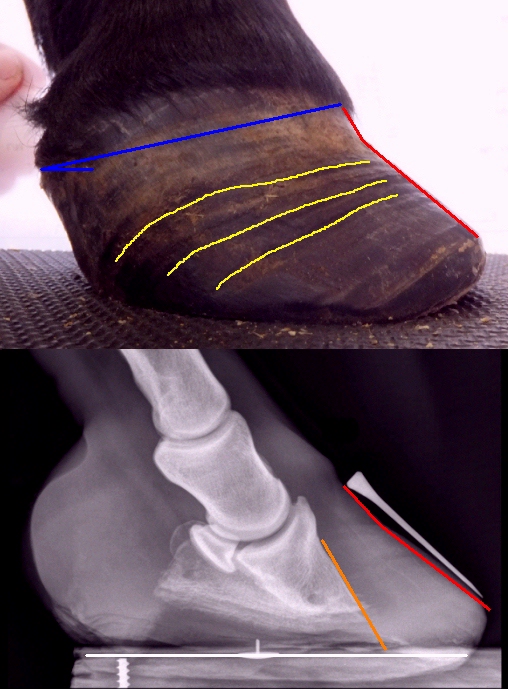
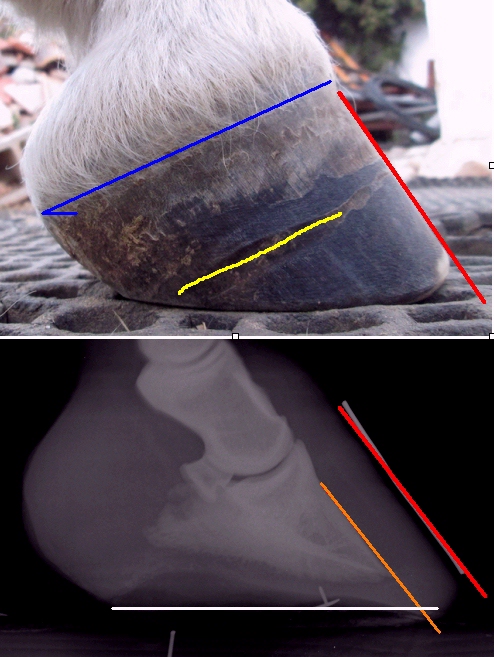
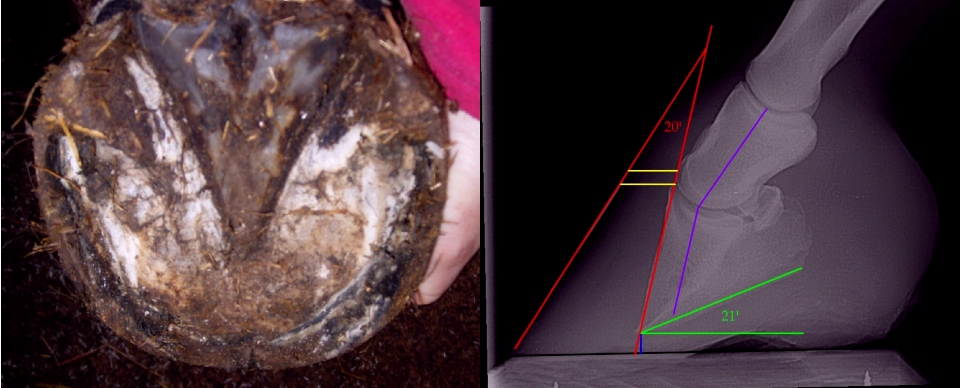
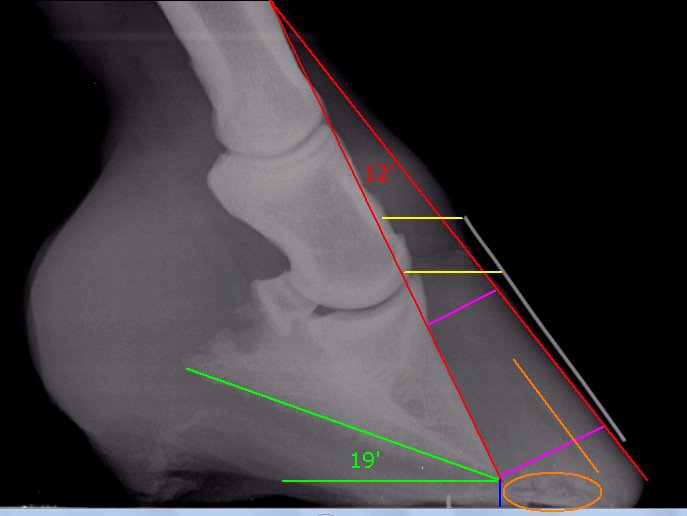
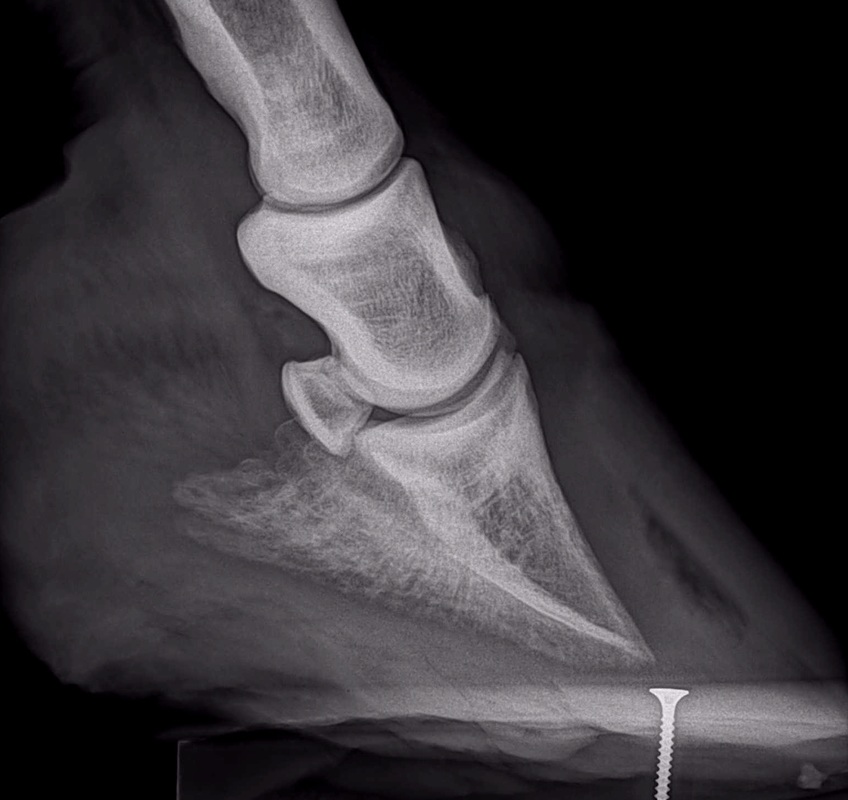
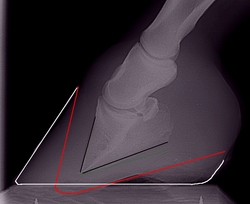

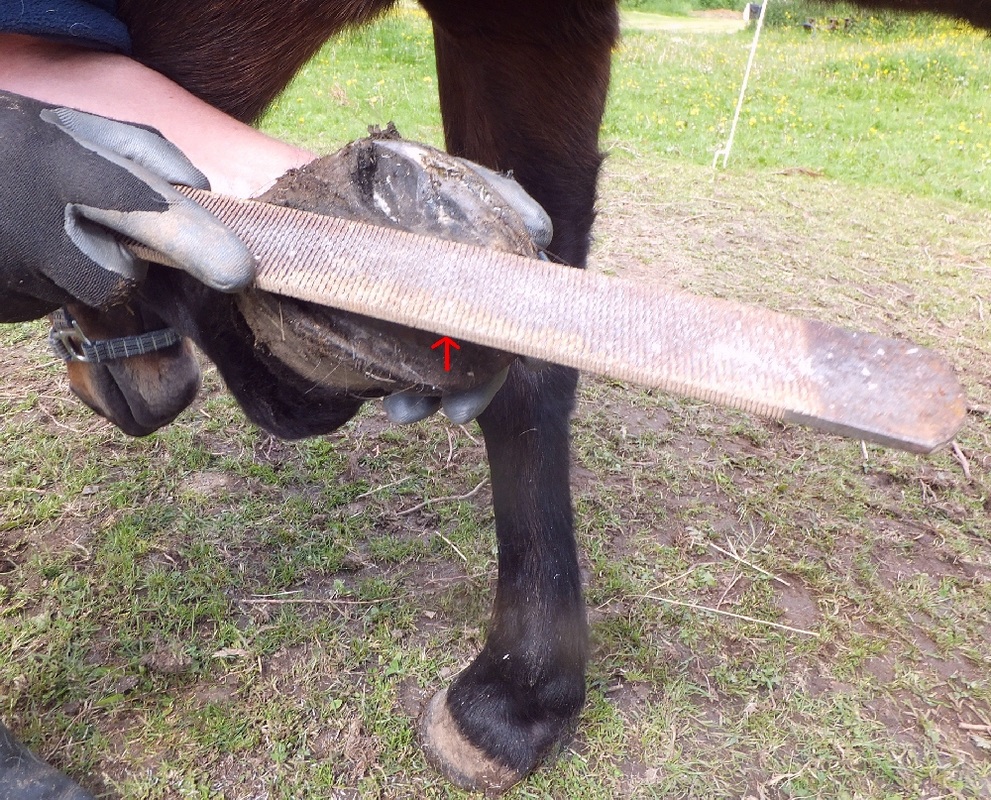
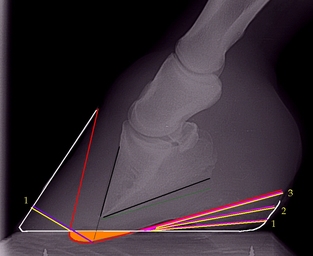
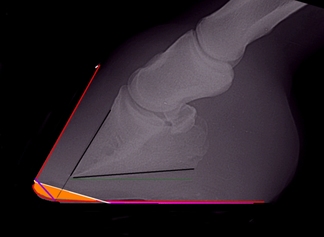
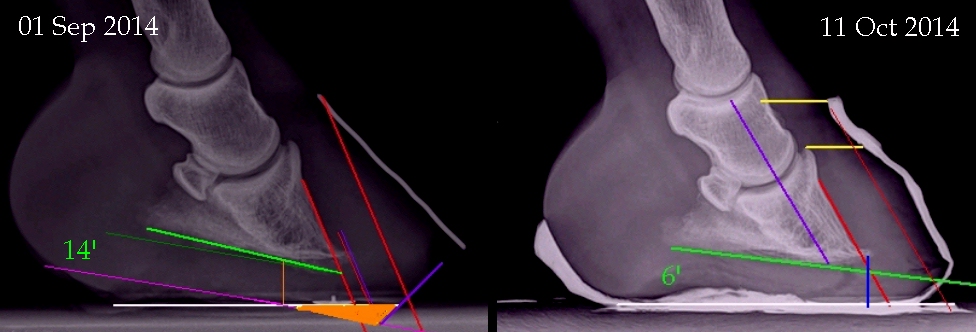
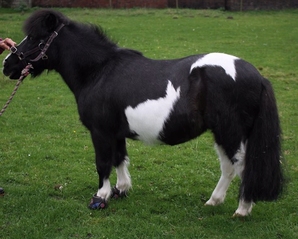
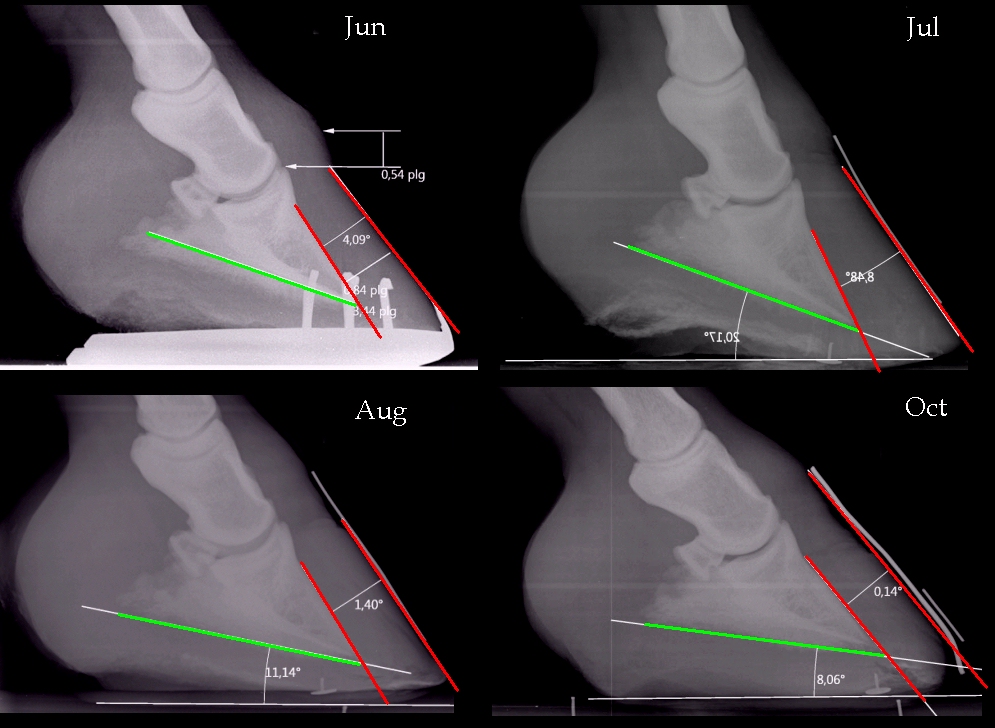
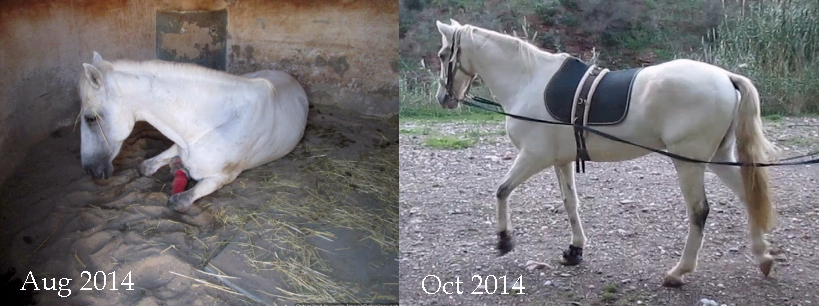
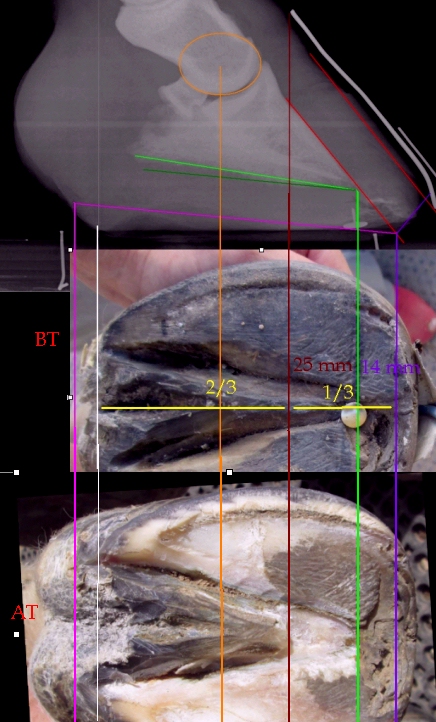
 RSS Feed
RSS Feed